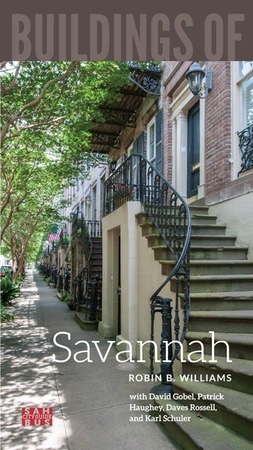
Erected by the Georgia Society of Colonial Dames and commemorating Bethesda’s founder, this modest yet elegant structure recalls the restrained classicism of the colonial chapels-of-ease that adorn the Carolina lowcountry. Noted Charleston architect Albert Simons paid careful attention to details in this regard, including the use of variously tinted bricks laid in Flemish bond; arched windows with 16-over-16, double-hung sashes; brick quoining and a bull’s-eye window and floating entablature over paired entrance doors capped by an arched transom and surrounded by alternating brick voussoirs and quoins. The interior is likewise austere, with white plaster walls and wooden wainscoting, a shallow rear gallery, and simple wooden pews (built by A. S. Bacon and Sons of Savannah) resting on a brick floor laid in a herringbone pattern. The chancel arch frames a raised chancel terminated by a stained glass window centered above the altar commemorating James Habersham Sr., Bethesda’s administrator during its first five years. Designed by Simons and made by the Willett Studios of Philadelphia, the clear amber glass window with an ornamental border depicts Christ blessing a pair of children below a medallion of a burning bush, the emblem of Bethesda.

